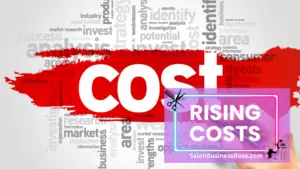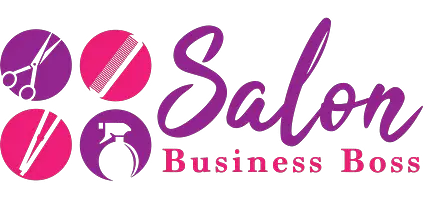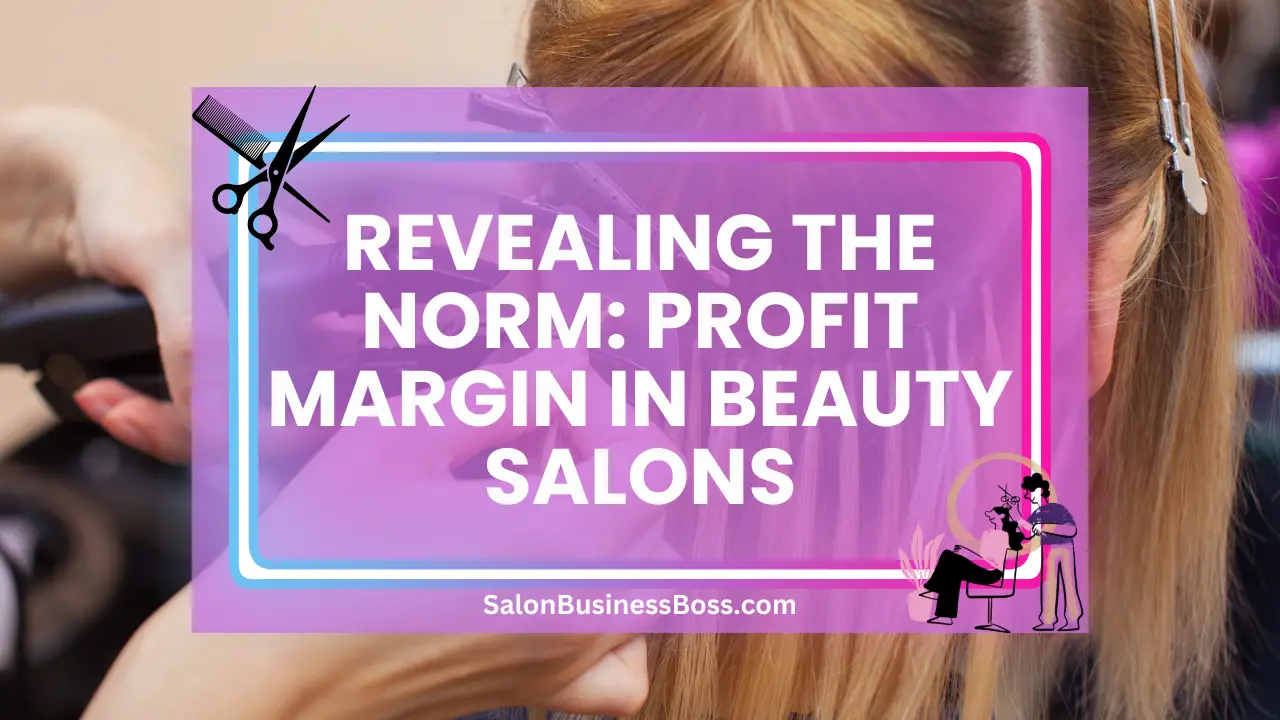The beauty salon industry has been a thriving sector, catering to people’s desire for beauty and self-care. Whether it’s a haircut, a manicure, or a rejuvenating spa treatment, beauty salons have become an essential part of modern-day life. For business owners in this industry, understanding the financial health of their venture is crucial.
The average profit margin for a beauty salon is about 8.2%. Factors like overhead costs, labor expenses, and pricing strategies play a significant role in determining profitability. Implementing smart cost management, strategic pricing, and loyalty programs can help salon owners boost their profit margins and achieve long-term success in a competitive market.
1. Defining Profit Margin and Its Importance in the Beauty Salon Industry:
Profit margin is a fundamental financial metric that reflects a business’s ability to convert revenue into profit. It is calculated by dividing the net profit (revenue minus all expenses) by total revenue and expressing the result as a percentage. For beauty salons, profit margin is a critical gauge of their operational efficiency and financial health. A high profit margin indicates that the salon is effectively managing costs and generating significant profit from its services.
In the context of a beauty salon, profit margin is particularly relevant due to the industry’s unique cost structure, which includes expenses for rent, utilities, supplies, and labor. By closely monitoring profit margin, salon owners can identify areas of potential improvement, such as optimizing costs, pricing strategies, or service offerings. Additionally, the profit margin serves as a reference point for evaluating the salon’s performance over time and benchmarking against industry standards.
An 8.2% profit margin means that for every $100 in revenue generated, the salon retains $8.20 as profit. This figure provides salon owners with a clear understanding of their ability to generate profits and guides them in making informed financial decisions to sustain and grow their business successfully.
2. Factors Influencing Profit Margin in Beauty Salons:
Several factors contribute to the profit margin of a beauty salon. These include:
a) Overhead Costs:
Overhead costs in a beauty salon encompass various fixed expenses, such as rent, utilities, insurance, and equipment maintenance. These costs are essential for running the salon smoothly and providing high-quality services. However, they can significantly impact the profit margin if not managed effectively. Salon owners can take several measures to control and optimize overhead costs, such as negotiating favorable lease agreements, implementing energy-efficient practices to reduce utility bills, and exploring bulk purchasing options for supplies. By streamlining these expenses, the salon can allocate more resources to revenue-generating activities, thus positively influencing the overall profit margin.
b) Labor Costs:
Labor costs represent a substantial portion of a beauty salon’s expenses, as skilled stylists and technicians play a pivotal role in delivering exceptional services to clients. Managing labor costs requires striking a balance between maintaining an optimal staffing level and ensuring employee productivity. Overstaffing can lead to unnecessary expenses, while understaffing may result in a decline in service quality and customer satisfaction. Salon owners can implement efficient scheduling practices to align employee availability with peak demand periods. Additionally, investing in staff training and incentives for exceptional performance can boost productivity and contribute to a healthier bottom line, ultimately enhancing the salon’s profit margin.
c) Pricing Strategy:

An effective pricing strategy is critical for maintaining a balance between competitiveness and profitability in a beauty salon. Setting prices too low may attract more customers but can erode profit margins, while overpricing may deter potential clients. Salon owners should conduct market research to understand their competitors’ pricing while considering the uniqueness of their services. Offering tiered pricing with different service packages can cater to various customer segments and preferences. Regularly reviewing pricing structures based on demand, costs, and customer feedback ensures the salon remains competitive while optimizing revenue streams and preserving profit margins.
Read more about: How To Create Your Salon Pricing
d) Service Mix:
The assortment of services offered by a beauty salon directly impacts its revenue streams and profit margin. A well-curated service mix that caters to diverse customer needs can boost overall revenue and attract a broader clientele. Salon owners should analyze customer preferences and industry trends to determine which services are most in demand. Introducing popular and innovative treatments can entice clients and increase the salon’s competitive edge. On the other hand, underperforming or rarely requested services may drain resources without contributing significantly to revenue. By periodically evaluating and adjusting the service mix, the salon can enhance its profitability and ensure a sustainable profit margin.
e) Marketing and Client Retention:
Effective marketing and client retention strategies are invaluable tools for driving customer traffic and fostering loyalty in a beauty salon. Well-executed marketing campaigns can attract new clients and increase brand visibility within the local community. Utilizing social media, targeted advertisements, and promotional offers can help generate interest and entice potential customers to try the salon’s services. Client retention is equally vital, as repeat business is more cost-effective than acquiring new customers. Implementing loyalty programs, personalized service, and regular communication with clients can encourage repeat visits and foster a sense of connection. By prioritizing marketing efforts and client retention, the beauty salon can experience sustained growth and a positive impact on its profit margin.
3. Industry Benchmarks and Regional Variations:
The beauty salon industry’s profit margins are influenced by a complex interplay of factors, resulting in variations across different locations and markets. On a national scale, the average profit margin for beauty salons hovers around 8.2%, offering a broad perspective of industry performance. However, this figure cannot be uniformly applied to all salons due to regional disparities.
Location plays a pivotal role in profit margins, with urban areas experiencing higher living costs that can impact overhead and labor expenses. Rent, utilities, and wages tend to be higher in bustling cities, putting pressure on profit margins. In contrast, salons situated in suburban or rural areas may enjoy lower living costs, providing more favorable conditions for profitability.
Clientele demographics also contribute to profit margin variations. Salons catering to affluent or specialized markets might command premium pricing, leading to higher profit margins. Conversely, those serving price-sensitive or less affluent clienteles may operate with slimmer margins.
4. Challenges Impacting Profitability in Beauty Salons:
While the beauty salon industry can be lucrative, it also faces unique challenges that impact profit margins. These challenges include:
a) Seasonality:
Seasonality is a significant challenge faced by beauty salons, as demand for services tends to fluctuate throughout the year. During peak seasons like holidays or special events, the salon may experience a surge in customers, leading to increased revenue. However, during off-peak periods, customer footfall may decline, resulting in uneven revenue streams. To mitigate the impact of seasonality, salon owners can offer special promotions and packages during slower periods to attract clients. Additionally, diversifying service offerings to include treatments suitable for different seasons can help maintain a steady stream of customers year-round. Proper financial planning and budgeting are essential to ensure the salon remains profitable during both busy and slow periods.
b) Intense Competition:
The beauty salon industry is highly competitive, with numerous salons competing for the same pool of customers. To maintain profitability, salons must differentiate themselves through unique services, exceptional customer experiences, and effective marketing strategies. Competitive pricing is crucial to attract cost-conscious customers, but it must also be balanced to avoid eroding profit margins. Investing in quality products and equipment, as well as continuously improving the skills of the salon’s staff, can help create a competitive advantage. Emphasizing the salon’s strengths and promoting its unique selling points can attract loyal customers and foster a positive reputation, ensuring long-term profitability in a crowded market.
c) Rising Costs:

Beauty salons face the challenge of coping with rising costs that can impact their profit margins. Inflation affects various aspects of the salon’s operations, including rent, utilities, and general expenses. Fluctuating costs of supplies, such as beauty products and equipment, can add to financial strain. Additionally, increasing minimum wages and other labor-related costs can put pressure on the salon’s profitability. To address rising costs, salon owners can negotiate with suppliers for better pricing or explore bulk purchasing options. Implementing energy-efficient practices can help reduce utility expenses. Smart staff management and optimizing employee productivity can also alleviate the impact of increasing labor costs on the salon’s bottom line.
Read more about: Running a Salon Business: A Guide and Key Strategies
d) Economic Conditions:
Economic downturns, such as recessions or financial crises, can significantly impact the beauty salon industry. During tough economic times, consumer spending on non-essential services like beauty treatments tends to decline. As a result, beauty salons may experience reduced customer traffic and lower revenue. To navigate through economic challenges, salon owners can focus on retaining loyal customers through special offers and loyalty programs. Offering cost-effective packages and promotions can attract price-conscious consumers while maintaining profitability. Maintaining a diverse range of services can help the salon cater to varying customer preferences and needs, ensuring a steady stream of revenue even during economic downturns. By adopting a flexible and adaptive approach, beauty salons can weather economic uncertainties and maintain a stable profit margin.
5. Strategies to Improve Profit Margin:
Beauty salon owners can implement various strategies to improve their profit margins and achieve sustainable growth. Some effective approaches include:
a) Cost Management:
Effective cost management is crucial for enhancing the profitability of a beauty salon. Salon owners should conduct a thorough analysis of expenses, identifying areas where costs can be reduced or optimized without compromising service quality. Negotiating better deals with suppliers and bulk purchasing can lead to cost savings on beauty products and equipment. Implementing energy-efficient practices and reducing wastage can lower utility expenses. Careful staff scheduling ensures optimal staffing levels, avoiding unnecessary labor costs. By regularly reviewing and streamlining expenses, beauty salons can boost profitability and allocate resources more efficiently, leading to a healthier bottom line.
b) Upselling and Cross-Selling:
Upselling and cross-selling techniques are powerful revenue-boosting strategies for beauty salons. By encouraging customers to opt for additional services or add-ons during their visit, salons can increase average transaction value without incurring significant overhead costs. Skilled staff can recommend complementary treatments or products, enhancing the customer’s experience and satisfaction. Offering bundled packages or loyalty rewards for repeat clients further incentivizes customers to try new services. Upselling and cross-selling not only drive revenue growth but also build strong relationships with customers, increasing the likelihood of their return and fostering loyalty.
c) Loyalty Programs:
Loyalty programs are an effective way to retain customers and drive repeat business for beauty salons. By offering rewards, discounts, or exclusive benefits to loyal clients, salons create an incentive for customers to return for future services. Acquiring new customers can be more expensive than retaining existing ones, making loyalty programs a cost-effective marketing strategy. Loyal customers are more likely to refer friends and family, expanding the salon’s customer base through word-of-mouth. By nurturing strong customer relationships through loyalty programs, beauty salons can build a loyal client base that contributes to sustained revenue growth and improved profitability.
d) Strategic Pricing:
Strategic pricing involves carefully evaluating service prices to optimize revenue and profit margins. Salon owners should consider market demand, competitor pricing, and the cost of providing each service. Offering tiered pricing with different service packages caters to a range of customer budgets and preferences. Premium services can command higher prices, while more basic options accommodate price-sensitive clients. Strategic pricing also considers seasonal trends and adjusts prices accordingly. Regularly reviewing pricing structures ensures that they remain competitive, reflective of the salon’s value proposition, and aligned with overall business goals. By implementing strategic pricing, beauty salons can maximize revenue while maintaining a healthy profit margin.
Conclusion
The average profit margin for a beauty salon is estimated to be around 8.2%. However, this figure is subject to regional variations and the salon’s unique circumstances. To maintain a healthy profit margin, beauty salon owners must pay close attention to overhead costs, labor expenses, pricing strategies, and marketing efforts. By understanding the factors influencing profitability and implementing effective strategies, beauty salons can thrive in a competitive market and achieve long-term success.
Frequently Asked Questions

1. Can online marketing strategies help improve profit margins?
Yes, effective online marketing strategies can attract a broader audience, leading to increased customer traffic and improved profit margins.
2. Is it possible to maintain a high profit margin in urban areas with high living costs?
Maintaining a high profit margin in urban areas may be challenging due to increased overhead and labor expenses.
3. How can beauty salon owners manage seasonality fluctuations?
Beauty salon owners can manage seasonality fluctuations by offering promotions during slower periods and focusing on specialized services that attract customers year-round.
To learn more on how to start you own salon checkout my startup documents here.
Please note that the contents of this blog are for informational and entertainment purposes only and should not be construed as legal advice. Any action taken based on the information provided in this blog is solely at your own risk. Additionally, all images used in this blog are generated under the CC0 license of Creative Commons, which means they are free to use for any purpose without attribution.

About the author. Entrepreneur and Salon Business Fan.
Hi! I am Shawn and I am a happy individual who happens to be an entrepreneur. I have owned several types of businesses in my life from a coffee shop to an import and export business to an online review business plus a few more and now I create online salon business resources for those interested in starting new ventures. It’s demanding work but I love it. I do it for those passionate about their business and their goals. That’s why when I meet a salon business owner, I see myself. I know how hard the struggle is to retain clients, find good employees and keep the business growing all while trying to stay competitive.
That’s why I created Salon Business Boss: I want to help salon business owners like you build a thriving business that brings you endless joy and supports your ideal lifestyle.

